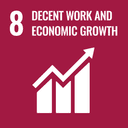
Himalayan Restoration Project: Restoring Biodiversity and Livelihoods in Chamba

Himalayan Restoration Project: Restoring Biodiversity and Livelihoods in Chamba
The Project is dedicated to revitalizing the broad-leaf oak and pine forests in Chamba, Western Himalaya. By partnering with 28 local villages, the project empowers women and youth with ecological training and sustainable livelihood opportunities while restoring the threatened flora and fauna in the region.







- (i) Environmental Sustainability
- (ii) Ecological Balance
Himachal Pradesh
Open for Funding
Existing Project
Executive Summary
The Himalayan Restoration Project seeks to ecologically restore 800 ha of the long neglected and largely unfamiliar, deteriorated broad-leaf oak and pine forest habitat nestled in the mid-elevations of the Himalaya in Chamba, Himachal Pradesh. The project is part of the UN’s Global Landscape Forum, Himachal Chapter, in partnership with local indigenous farming communities, empowering them with ecology-based adaptations & sustainable livelihood options, and collaboratively rewilding this degraded landscape using native plant species grown in a community managed nursery. By actively involving the local communities as integral members of our team and fostering partnerships with key stakeholders such as the forest department and other NGOs, we holistically bring decision making, ensuring scientific and ecological restoration of this precious ecosystem.
The Chamba Valley is currently reduced to having one small wildlife sanctuary (Khajjiar-Kalatop) and several isolated small fragments of the lesser-known forests interspersed with ever-increasing terraced agriculture that occupies more than 90% of the landscape. The Sanctuary presently covers only 17.7 sq/km. compared to 69 sq/km. earlier. In addition,more than 75% of the surrounding landscape has been deforested. This has resulted in the wild animals coming into human localities increasing interactions and crop-raiding. The basic occupation of people living in the region is agriculture, which is affected by increasing crop-raiding. Thus, the present generation is moving out of the region. In addition, increase in forest fires is affecting people and wildlife in the region. The soil has been left barren due to felling of trees making the area prone to landslides. The unpredictable weather and uncertain rains may lead to climate migration soon.
Also, the project will:
- Provide livelihood opportunities to women by training and hiring them to run the nursery.
- Make the youth and the next generation climate resilient through climate centric education.
- Fight climate change centric threats like forest fire and landslide through restoration.
- Provide food for the wild animals and thus prevent human-wildlife negative interactions, fostering coexistence through increasing native forest cover.
The project works towards building climate resilience, adaptation, and fighting climate crisis to bring coexistence in the landscape and reduce the human-wildlife negative interactions by improving livelihoods of people and providing a safe niche to the animals. This is a long-term project with investment in the landscape until the locals are skilled and can take on the responsibilities by themselves to sustain the project with enhanced livelihoods.
About the NGO
Zoo Outreach Organisation was founded in 1985. The organization was initially established as a Society in 1985 and later registered as a Trust in 2006 under the Indian Trust Act. ZOO addresses biodiversity, ecosystem, and livelihood conservation using science, education, training, outreach, contemporary conservation tools & processes with its networks based on thematic groups to tackle gaps in knowledge, research & conservation of wild fauna, flora, & funga, and issues related to climate change mitigation, human-wildlife coexistence, restoration & rewilding, & sustainability.
Their objective is to promote research, education and conservation of lesser-known flora, fauna, and funga. Identify and fill gaps in knowledge in wildlife through scientific research. Train and build capacity in field techniques, taxonomy, and conservation planning. Promote, education and outreach programs on conservation, human-wildlife coexistence, metapopulation management, conservation planning, evidence building and science. Build evidence in conservation through hosting a peer-reviewed scientific publication. Communicate conservation science to the general public through a monthly magazine. Assess, Plan, and Act on species and habitat conservation. Promote sustainability holistically for livelihood and species/habitat conservation. Conduct research and develop informed policies on trade, alien invasive species, and wildlife diseases. Promote restoration and rewilding with stakeholder participation.
Currently, ongoing projects include the Western Ghats, western Himalaya, elephant range states, and northeastern India.
Please Login to view the additional details or Register as Donor
- Problem Statement
- Larger Context
- Proposed Intervention
- Geography and demography
- Methodologies and activities
- Budget
- Additional Details